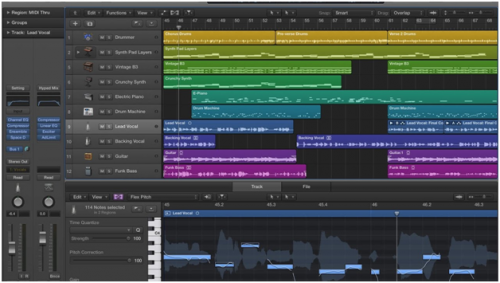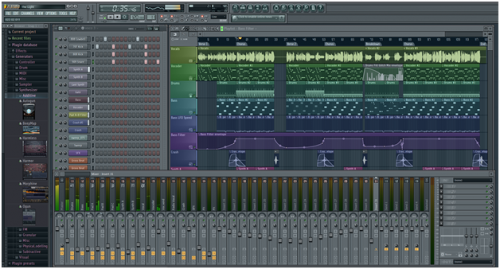Have you recently invested in a beat-making software for you Mac computer? Well, in order for your musical pieces to sound professional, you’re supposed to be familiar with the way in which the program works.
Using attentively-chosen virtual instruments and audio effects can make your tracks stand out from the plethora of other songs waiting to become viral. Naturally, your computer system is also expected to be powerful enough to run the software without any obstructions.
The following beat-making tips based one guides from ergonotes.com can be helpful to would-be producers.
Check the capacity of your computer
The initial factor to check prior to commencing your beat-making journey is the workload capacity of your computer system. There are a couple of factors that affect the system’s power, such as the CPU, RAM, and hard drive capacity of the unit. In order for your computer or laptop to work fast and handle multiple processes at the same time, the CPU is supposed to have a high score. Go to this page to check out the type of CPU on your computer as well as its speed.
Another factor that affects the process of producing music is RAM, which should be of at least 8 GB for the beat-making software to function properly. It limits the number of plugins and tracks that users can run simultaneously, which is why 16 GB of RAM is considered optimal.
Ultimately, the hard drive capacity is a vital factor that directly affects the amount of music you can produce and store. While recording, users are recommended to use the internal hard drive, as it has faster read and write speed. The external drive is commonly used for storing users’ projects since it’s known to cause crashes in the course of recording.
Use internal sounds
After making sure your computer system and beat-making software are good enough for the music-making process, you’re supposed to inspect the library of internal sounds. Each beat-making program is equipped with a myriad of virtual instruments, recreating virtually all instruments you can think of. For instance, solely a few clicks are enough for users to recreate the sound of a piano, drums, flute, or guitar.

Moreover, the selection of virtual instruments varies across different types of software, but almost all of them provide an extensive assortment of internal sounds. Nowadays, there is a variety of review sites, like bestbeatsmakingsoftware.com – mac user, assisting Mac users in their choice of beat-making software. These programs enable would-be producers to use a variety of instruments in their musical pieces, even though the largest part of them has never played a real instrument before. You can ‘play’ any virtual instrument you want from the comfort of your home or studio without the audience knowing.
In addition, you can purchase samples of vocal lines and instruments to include in your musical pieces. In fact, the base of most music creations is the use of such samples, which are available for purchase in an endless number of forms. Users can purchase sample collections of any genre, originating from anywhere around the globe.
Once you’ve purchased an instrument sample, the following step is to load it into your software sampler and modify it in accordance with your preferences. The sample collections are particularly beneficial for would-be producers who work on multiple projects simultaneously, as these provide a quick music base for one’s tracks. If you wish to stand out from the crowd, make sure you purchase some of the exclusive sample collections.
Start mixing
After deciding which virtual instruments and samples are worthy enough to be included in your musical piece, the following step is to arrange and mix them properly. The process of arrangement refers to the development of a track, hence starting with an intro and followed by choruses.
While the arrangement process is dissimilar across genres, the mixing process is universal. Every song is supposed to spread in two dimensions, both across the stereo spectrum and the frequency range. In order for your musical composition to be successful, it has to spread optimally in both dimensions.
When it comes to placing a track in the stereo spectrum, it’s supposed to be put anywhere between the right and left end of the spectrum. The rule of thumb is that bass lines are usually placed in the middle of the spectrum, while the vocal lines are placed in their close proximity. Owing to the high frequency, vocal lines are easily distinguished from the bass ones, despite being next to each other on the spectrum.
Use mixing effects
Apart from virtual instruments, most of the beat-making programs are equipped with a variety of virtual effects. These effects are added to the mixing process in order to emphasize particular elements of the track.
For instance, the reverb effect is used for creating the impression that different parts of one’s track were recorded in different rooms. The use of reflective echoes is crucial for making certain parts repeat throughout the song.
Moreover, amp simulators are used when transforming the acoustic sound of the guitar into electric, which is particularly common in guitar tracks. Additionally, users take advantage of other guitar effects as well, like overdrive, distortion tremolos, etc. Read more about the basics of audio effects.
Bottom line
Don’t be afraid to experiment with different virtual instruments, vocal lines, and audio effects.
It’s the only way to hope for success!



